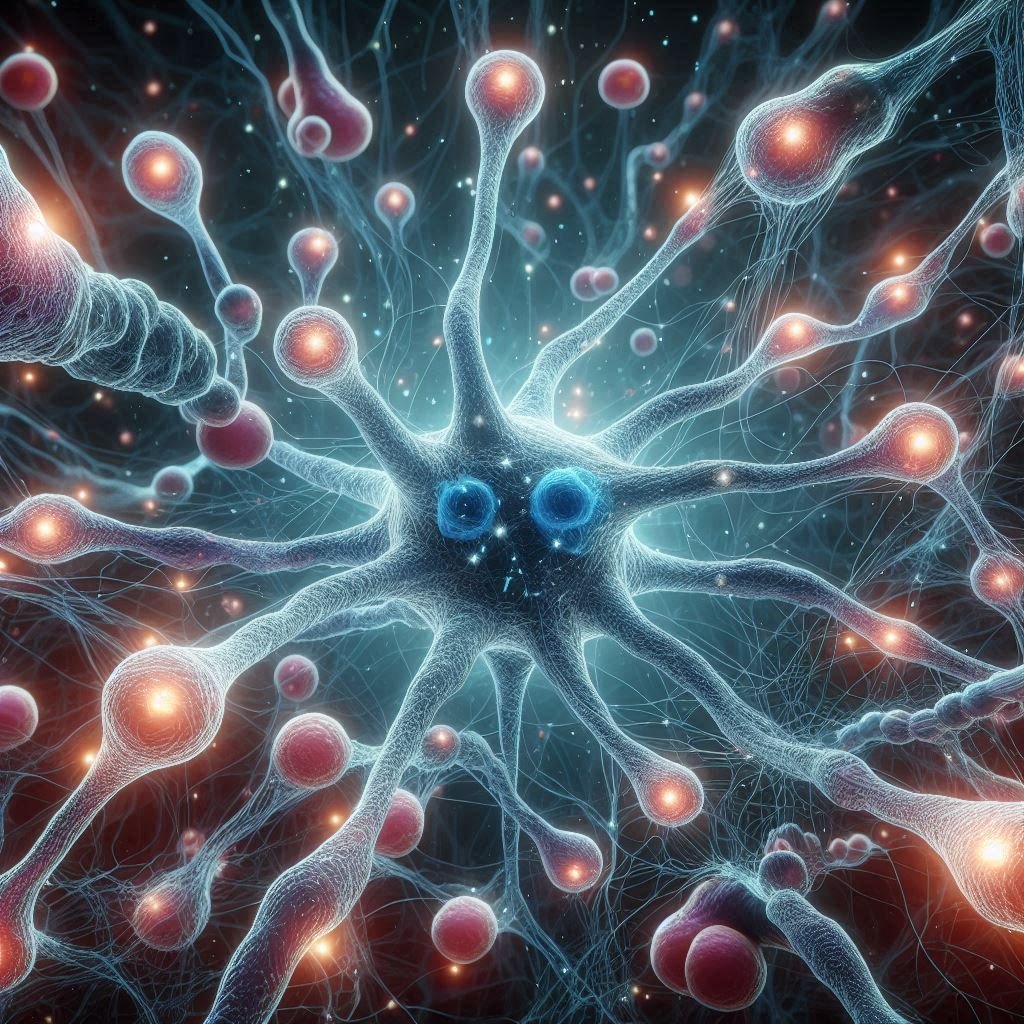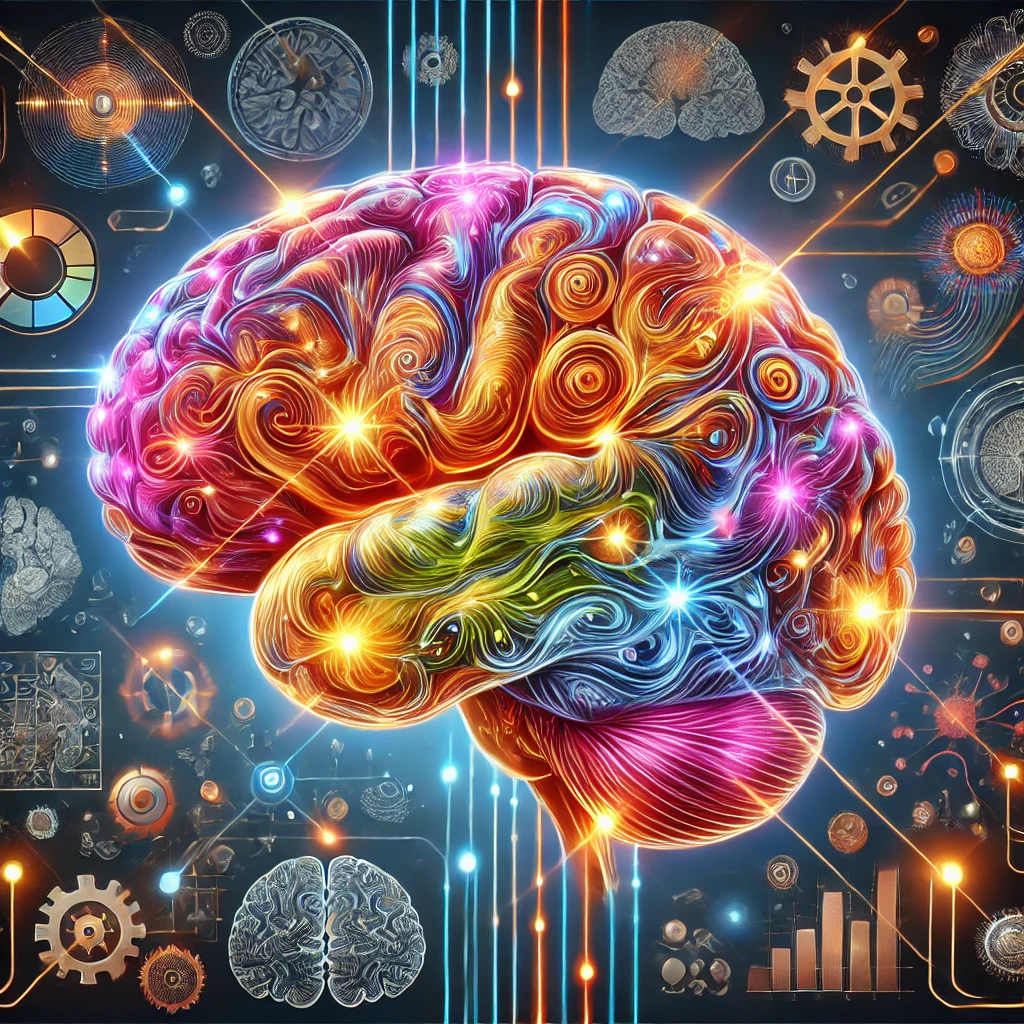Introduction
Have you ever heard the myth that we only use 10% of our brains? It’s a common misconception that has been floating around for years, but it’s far from the truth. In reality, we have the potential to utilize 100% of our brain’s capacity. This article will explore how you can activate your entire mind through the concept of brain synchronization, unlocking your brain’s full potential.
Table of Contents
The Myth of Using Only 10% of Our Brains
The idea that we only use 10% of our brains likely stems from a misunderstanding of early neurological studies. These studies revealed that only a small portion of the brain consists of neurons, with the rest being glial cells, which were initially thought to be merely supportive. However, modern science has debunked this myth. We use all parts of our brain, with each area responsible for different functions that contribute to our overall cognitive abilities.
Neurons and Glial Cells: A Dynamic Duo

Neurons are the brain’s primary communication tools. It transmits information through electrical impulses that form the basis of our thoughts and actions. But they don’t work alone. Glial cells are their helpers, making sure everything runs smoothly and that the neurons are healthy and connected. Together, they keep our brain functioning properly. For a long time, scientists thought glial cells were just there to support neurons, like assistants. But now it is proven that they do much more. They take care of the neurons by providing them with nutrients (like giving food to the neurons), cleaning up waste (like taking out the trash), and even helping to create connections between neurons (called synapses). These connections are important because they allow neurons to communicate with each other.
The Dance of Brain Hemispheres
Our brain is divided into two hemispheres, each with specialized functions. The left hemisphere is logical and analytical, while the right is creative and emotional. Although these functions seem distinct, they work best when both hemispheres are synchronized, allowing us to think more holistically and creatively.
One simple way to encourage this synchronization is through cross-lateral movements, like crossing your arms or legs. These movements stimulate both hemispheres to work together, enhancing cognitive flexibility and problem-solving skills.
Understanding Brain Dominance
As we grow, most of us develop a dominant hemisphere, where one side of the brain leads. This dominance can change throughout the day, much like an oscillating waveform between the left and right hemispheres. Although this is a natural process, it can sometimes limit our thinking, as we can become too dependent on one hemisphere. Recognizing this pattern and striving for hemispheric synchronization can help us achieve a more balanced perspective.
The Waveform of Life: Brain Activity Fluctuations
Our brain’s activity isn’t static; it fluctuates between left and right hemisphere dominance throughout the day. This oscillation can influence our decision-making, creativity, and overall mental state. To achieve a more balanced and harmonious mental state, it’s essential to be aware of these fluctuations and employ strategies that promote synchronization, such as mindfulness and cross-lateral movements.
Practical Applications of Brain Synchronization
Brain synchronization isn’t just a theoretical concept; it has real-world applications that can improve your daily life. Here are some practical techniques to activate your entire mind:



- Mindful Breathing and Meditation: Practicing mindfulness helps calm the mind and encourages hemispheric cooperation. Set aside a few minutes each day to focus on deep breathing, which can reduce stress and make your brain more receptive to synchronization.
- Cross-Lateral Movements: Simple actions like crossing your arms or legs, or even switching the hand you use for tasks, can promote brain synchronization. These movements engage both hemispheres, enhancing overall brain function.
- Creative Pursuits: Engaging in activities like painting, playing an instrument, or writing can stimulate both the logical and emotional centers of your brain. These pursuits encourage collaboration between the hemispheres, leading to moments of insight and inspiration.
The Power of Neuroplasticity
Neuroplasticity is the brain’s ability to reorganize itself by forming new neural connections. This ability allows us to learn and adapt at any age. By understanding and harnessing neuroplasticity, you can train your brain to synchronize more effectively, improving cognitive functions and overall brain health.
Enhancing the Prefrontal Cortex (PFC)

The prefrontal cortex (PFC) is responsible for higher-order functions like planning, decision-making, and self-control. Strengthening your PFC can significantly enhance brain synchronization. Techniques such as setting goals, recognizing patterns, and engaging in complex problem-solving tasks can help improve PFC function, leading to better overall brain synchronization.
Boosting Cognitive Abilities through Language and Inhibition

Language skills are deeply connected to brain function, particularly in the PFC. Practicing speech, writing, and teaching can strengthen this area, enhancing your ability to think critically and creatively. Additionally, developing the ability to say “no” (inhibition) helps maintain focus and achieve goals, crucial for effective brain synchronization.
Movement and Its Connection to Brain Synchronization

Physical movement is closely linked to cognitive function. Exercises that control eye movements and stimulate body movement, such as yoga or martial arts, can improve brain synchronization. These activities help strengthen the neural pathways associated with both hemispheres, promoting better overall brain health.
Breaking Free from Habitual Patterns
Our brains often fall into habitual patterns that can limit creativity and personal growth. By consciously engaging in activities that require both hemispheres, you can break free from these patterns and enhance your cognitive flexibility. This disruption of habitual behaviors is key to achieving a more synchronized and adaptable mind.
The Role of Dopamine in Motivation and Focus
Dopamine, often called the motivation chemical, plays a significant role in brain function. Simple activities like walking or engaging in a hobby can boost dopamine levels, enhancing motivation and focus. This increase in dopamine can help maintain brain synchronization, especially when you’re tackling challenging tasks.
Staying in Flow: Enhancing Focus and Productivity
Flow is the state where you are fully immersed and focused on a task you enjoy. When in flow, your brain operates at its peak, with both hemispheres working in harmony. To achieve this state more often, focus on tasks you’re passionate about and incorporate them into your daily routine. This not only improves brain synchronization but also makes work feel less like a chore and more like a fulfilling activity.
To Do List
1. Understand the Myth of Brain Usage
- Research and comprehend the debunked myth that we only use 10% of our brains.
- Learn about the roles of neurons and glial cells in brain function.
2. Encourage Hemispheric Synchronization
- Practice Cross-Lateral Movements:
- Incorporate simple cross-lateral movements like crossing your arms or legs into daily routines.
- Experiment with switching the hand used for daily tasks to engage both hemispheres.
- Engage in Creative Activities:
- Regularly participate in activities like painting, playing a musical instrument, or writing.
- Explore new hobbies that stimulate both logical and creative thinking.
3. Enhance Brain Function with Mindfulness
- Mindful Breathing and Meditation:
- Set aside time daily for mindful breathing exercises.
- Practice meditation to reduce stress and promote brain synchronization.
4. Leverage Neuroplasticity
- Strengthen the Prefrontal Cortex (PFC):
- Engage in activities that require goal setting, pattern recognition, and complex problem-solving.
- Incorporate tasks that challenge the PFC into your daily routine.
- Boost Cognitive Abilities through Language:
- Practice speaking, writing, and teaching to strengthen language skills and PFC function.
- Work on saying “no” to distractions to improve focus and goal achievement.
5. Integrate Physical Movement
- Exercises for Brain Synchronization:
- Include physical activities like yoga or martial arts that involve controlled movements.
- Practice eye movement exercises to strengthen neural pathways.
6. Break Habitual Patterns
- Consciously Disrupt Routines:
- Engage in new activities that require the use of both brain hemispheres.
- Challenge yourself to break free from habitual behaviors that limit cognitive flexibility.
7. Increase Dopamine Levels
- Boost Motivation and Focus:
- Regularly engage in hobbies or simple activities like walking to increase dopamine.
- Use this motivation to maintain brain synchronization during challenging tasks.
8. Achieve Flow State
- Enhance Focus and Productivity:
- Identify tasks you’re passionate about and incorporate them into your daily routine.
- Aim to achieve a flow state where both hemispheres of the brain work in harmony.
9. Continuous Learning and Practice
- Embrace Lifelong Learning:
- Recognize that neuroplasticity allows improvement at any age.
- Continuously practice mental exercises to enhance brain synchronization.
10. Regular Review and Reflection
- Monitor Progress:
- Reflect regularly on improvements in focus, creativity, and problem-solving abilities.
- Adjust practices as needed to maintain and improve brain synchronization.
Conclusion
In conclusion, the myth that we only use 10% of our brains has been thoroughly debunked. We have the potential to utilize our entire brain, but this requires conscious effort to synchronize both hemispheres. By employing techniques such as mindfulness, creative pursuits, and movement exercises, you can unlock the full potential of your mind, leading to a more harmonious, efficient, and fulfilling life.
FAQs
- What is brain synchronization?
- Brain synchronization refers to the harmonization of the left and right hemispheres of the brain, allowing for optimal cognitive function and creativity.
- How can I tell if my brain hemispheres are synchronized?
- Signs of brain synchronization include improved focus, creativity, problem-solving abilities, and a sense of mental clarity.
- What are some quick exercises to improve brain synchronization?
- Simple exercises include cross-lateral movements, mindfulness meditation, and engaging in creative activities like drawing or writing.
- How does meditation help in brain synchronization?
- Meditation calms the mind and reduces stress, making it easier for both hemispheres to work together in harmony.
- Can anyone improve their brain synchronization at any age?
- Yes, thanks to neuroplasticity, individuals of any age can improve their brain synchronization through consistent practice and mental exercises.



